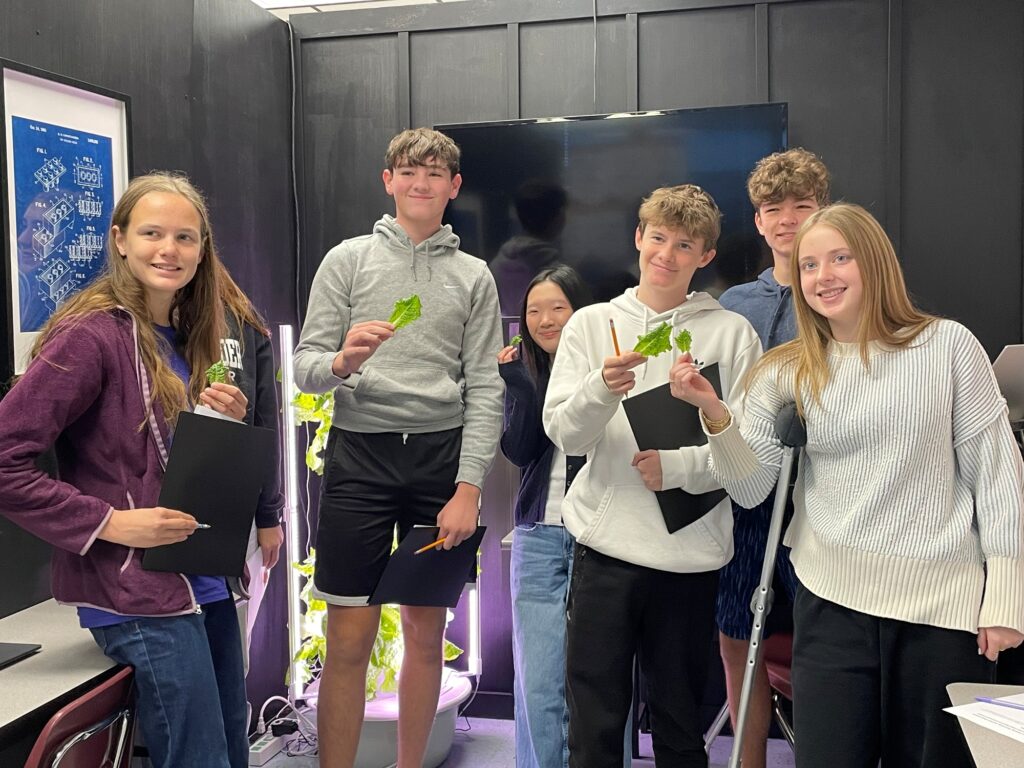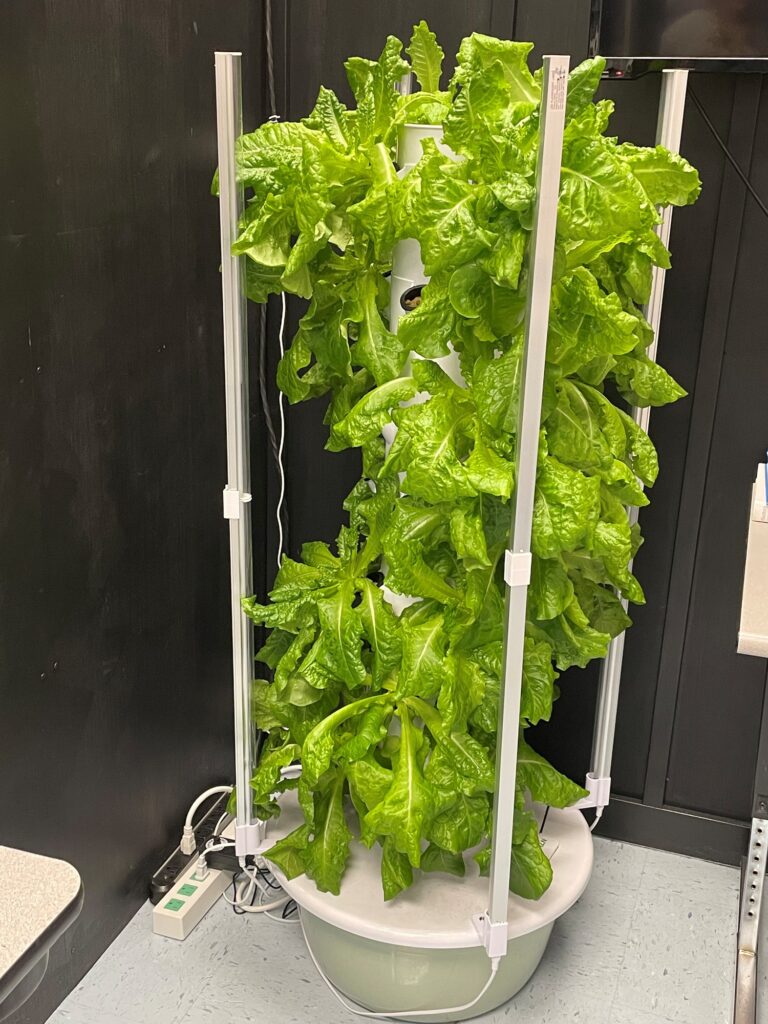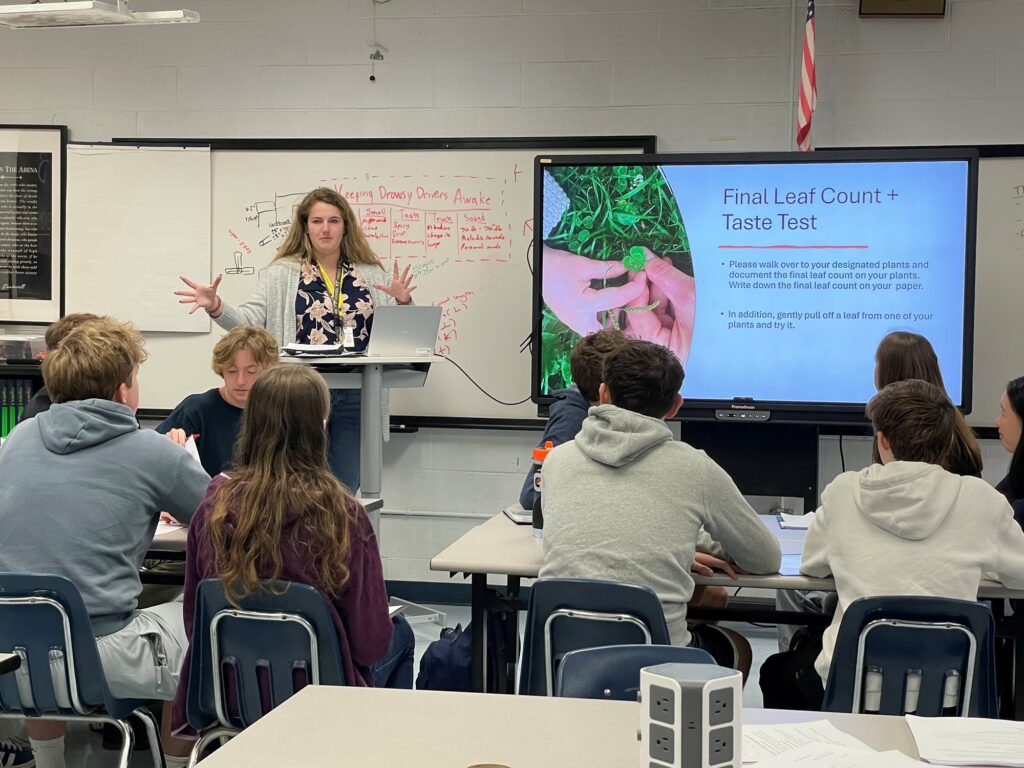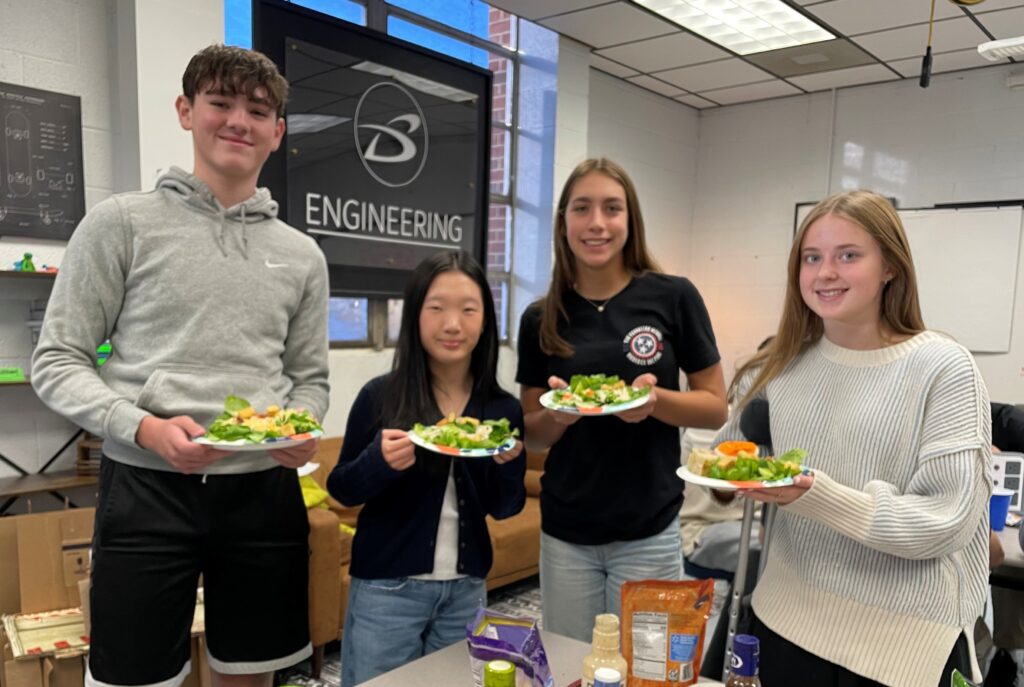
What is green and crunchy — and might help high schoolers unlock a future career?
The answer is all about educational partnerships. Virginia Western Community College has developed a 5-week hydroponics project for high school classrooms, using a hydroponics tower to grow Buttercrunch lettuce. A sensor creates graphical visualizations of data, and students interpret the data that has been collected over the project’s duration.

They also get to taste-test the lettuce. In the Engineering Program at Roanoke County’s Burton Center for Arts & Technology, students wished each other “Cheers!” before sampling in the fourth week of the program on Oct. 16. They remarked that it tasted fresh, was crunchy and not bitter at all. “Quite delicious!”
All this is possible thanks to an Advanced Technological Education grant that the National Science Foundation awarded to Virginia Western last year to develop connections between the College’s Agriculture and Mechatronics programs. The Cross-Pollination Skillsets project focuses, in part, on building Virginia’s workforce in controlled environmental agriculture.
“We created this program to allow high-school students to see a real-life project combining agriculture and technology,” said Cynthia Fairbanks, Ag-Tech Program Assistant and Adjunct Professor in Virginia Western’s School of STEM, who leads the high school initiative. “The program teaches some amazing hands-on skills with technology and agriculture and opens the conversation of data literacy,” Fairbanks said.
In addition to the Burton Center, the program is running this fall at the Roanoke city’s Charles W. Day Technical Education Center (DAYTEC) and Lord Botetourt High School, with plans to expand to more schools this spring.
“This hydroponic program gives students a new take on agriculture, because so many high-school aged students think agriculture is conventional farming. This opens their eyes that their interest in technology can be directly applicable to modern farming techniques,” Fairbanks said.

During the five-week project, Fairbanks visits the classroom weekly for 15-minute lessons using the hydroponic tower, a vertical set-up with 28 grow cups, a pump and an LED light source. The NIWA Grow Hub monitors humidity, temperature, light levels and more; the class programs through the NIWA unit to keep the pump and lighting on a roughly 16-hour timer per day. Nutrients added to the water in the tower’s base provide a soilless way of growing food.
Students are assigned plants to monitor, and each week, they check leaf growth and eventually taste the lettuce to determine ideal harvesting time. In addition, an iPad left in the classroom is connected to the NIWA Grow Hub, which allows students to see the data’s progression.
Those whose interest is piqued are invited to learn more about Virginia Western’s Ag-Tech associate degree pathway, which develops hands-on applied engineering skills alongside agricultural knowledge and practice.
Virginia Western’s Ag-Tech team of Fairbanks, Dr. David Berry and Dr. Mallory White are prepared to help students determine their higher education goals and be a support if they enter the Ag-Tech pathway. They can share more about potential career opportunities such as working in a Controlled Environmental Agriculture facility doing hydroponics full-time, working in manufacturing in an agriculture setting, or being an equipment technician or farm manager.
“Virginia Western is thrilled to pioneer this transformational programming in our region,” said Dean of STEM Amy White. “The opportunity to blend technology, agriculture and food production while partnering with local high school students and faculty aligns directly with our mission and serves to increase opportunities for our community.
“Virginia Western is proud of our innovative approach to workforce and talent development, and we hope to expand this, and other, programs in the future. I want to celebrate the hard work of our team who has put this programming together, as well as the three high school classrooms for being fabulous partners,” White said.
In the fifth week of the program at Burton on Oct. 24, Fairbanks guided the students through interpreting graphical representations of project data and observing what their biggest takeaway from the chart and data points were. “Seeing that all of our statistics were in the correct levels the entire five weeks can prove to us that’s why our plants did so well, and the lettuce tastes good, and it’s tripled in size from a couple of weeks ago,” she told the class.
Then the fun part — harvesting their lettuce and enjoying Salad Day, with toppings, dressings, and sourdough bread bites Fairbanks made for the occasion. Each student snipped a head of lettuce from one of the grow cups. “Let us eat!” one student proclaimed.
The process from seed to harvest made an impression. “I thought it was really interesting how with hydroponics you can control each individual variable” to successfully grow plants, said Emily Knoblock, who is a junior at Northside High School and a Burton engineering student. “It’s interesting how you can calculate the ideal values for each of those variables.”
“This was an incredible experience for the kids,” said Sarah Gerrol, engineering teacher at Burton. “This five-week program has opened their eyes to how engineering and technology can be incorporated with agriculture. They actually get to see what they eat in the grocery store and how it’s grown, so it’s been pretty amazing to see their interest, and their excitement, to see from a little seed, to a sprout, to growing 25 leaves of lettuce in one pot.”






